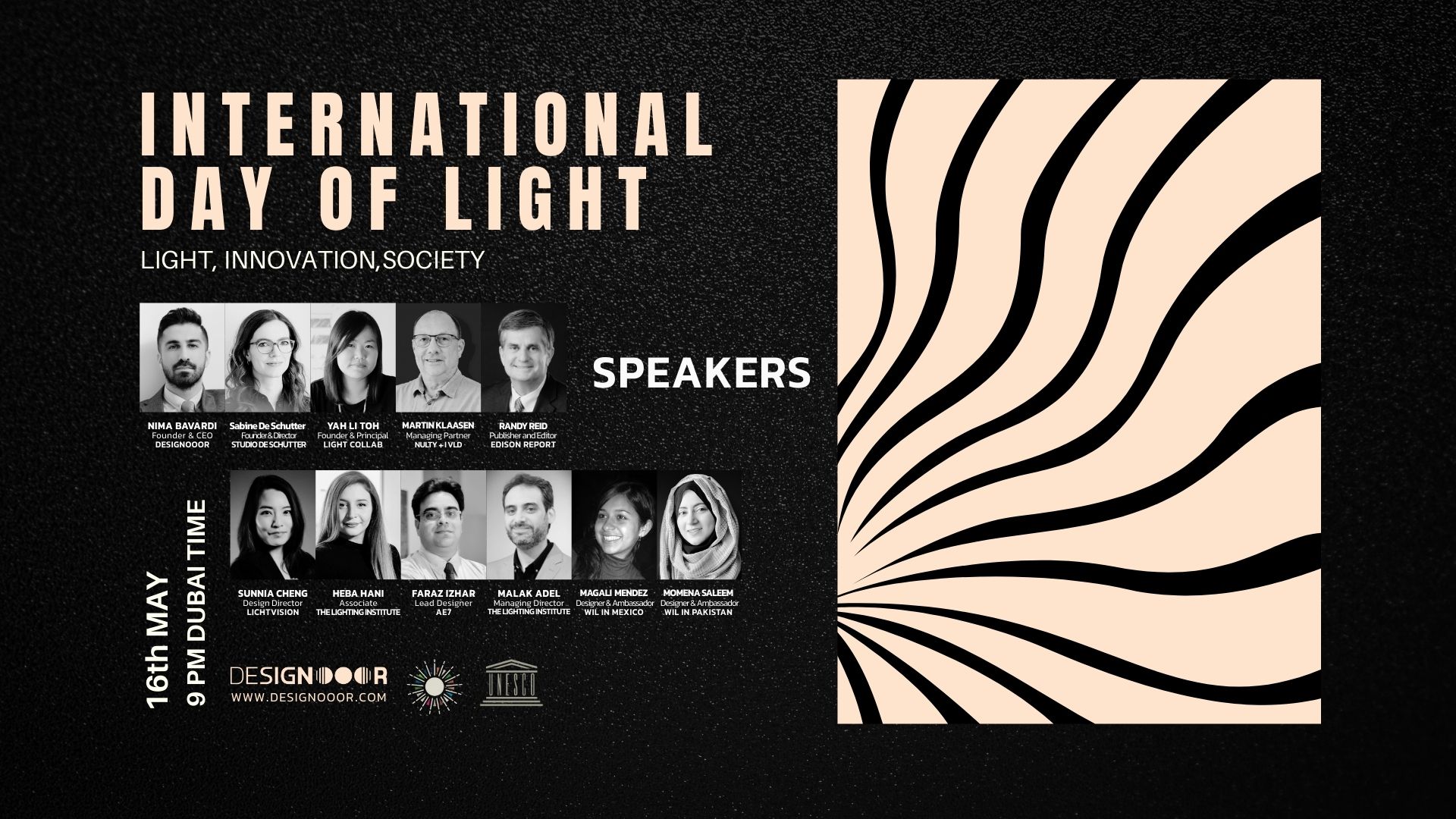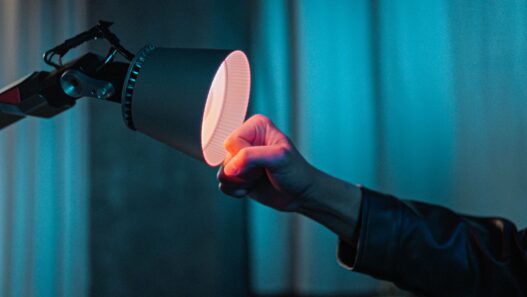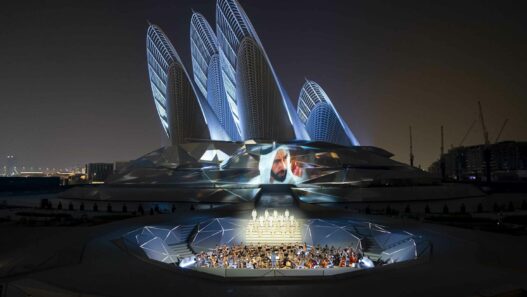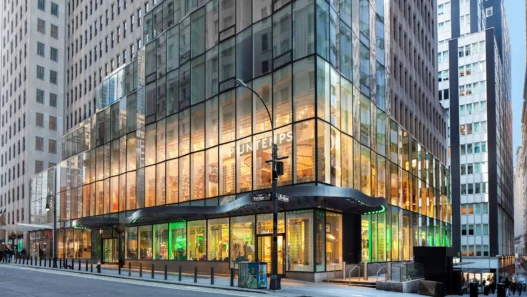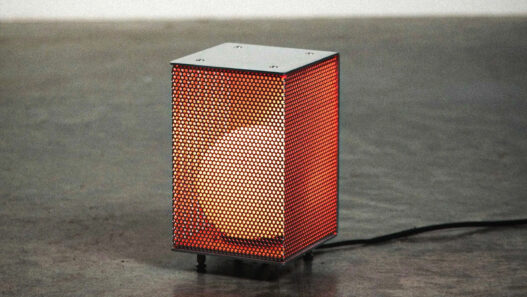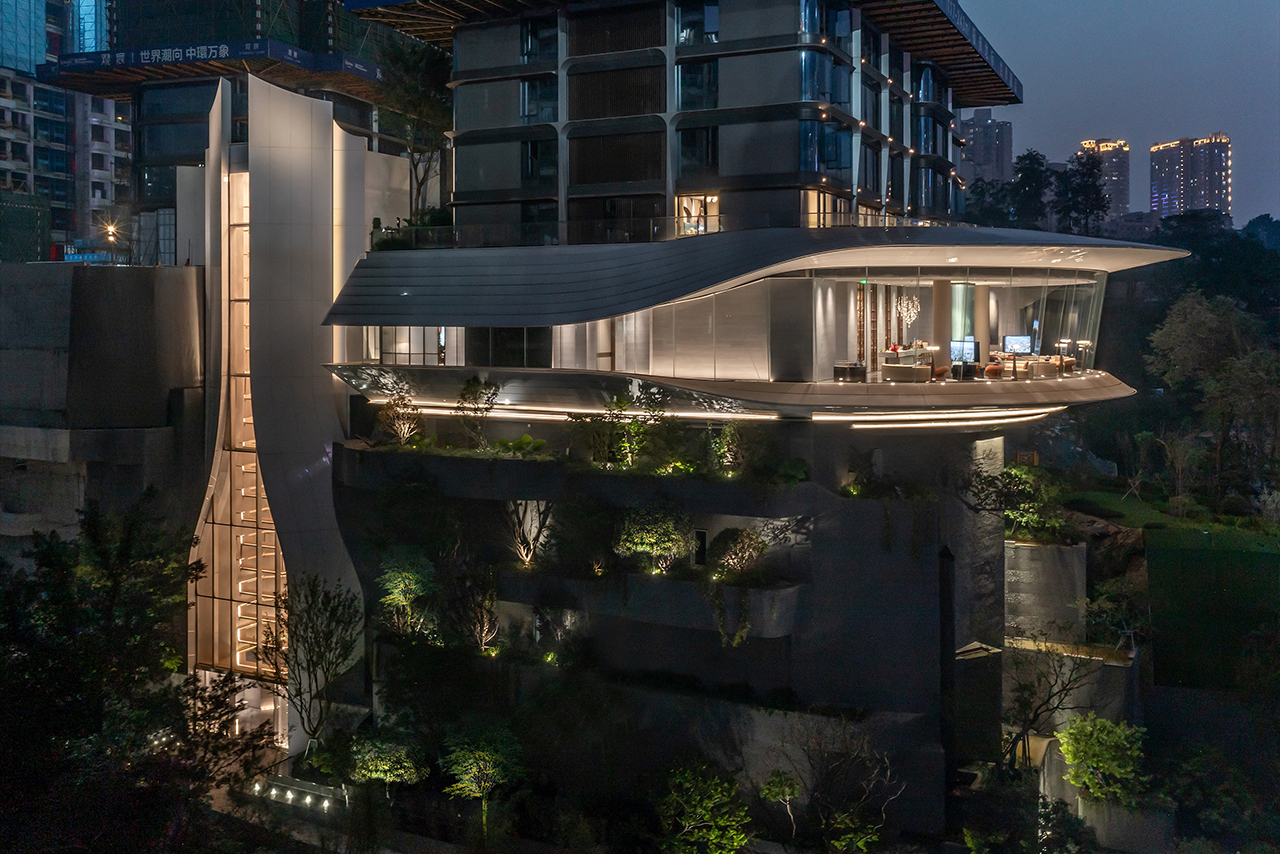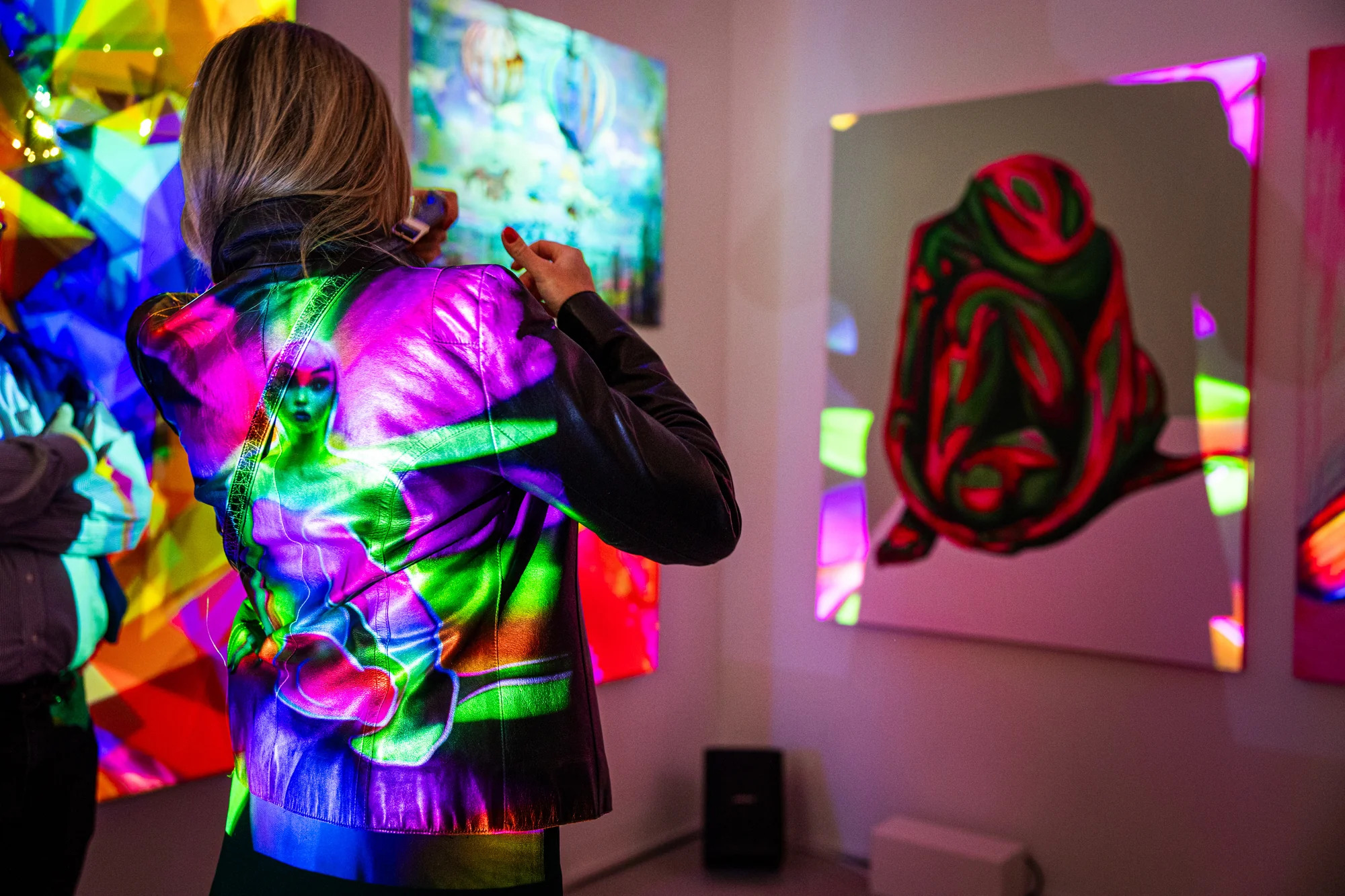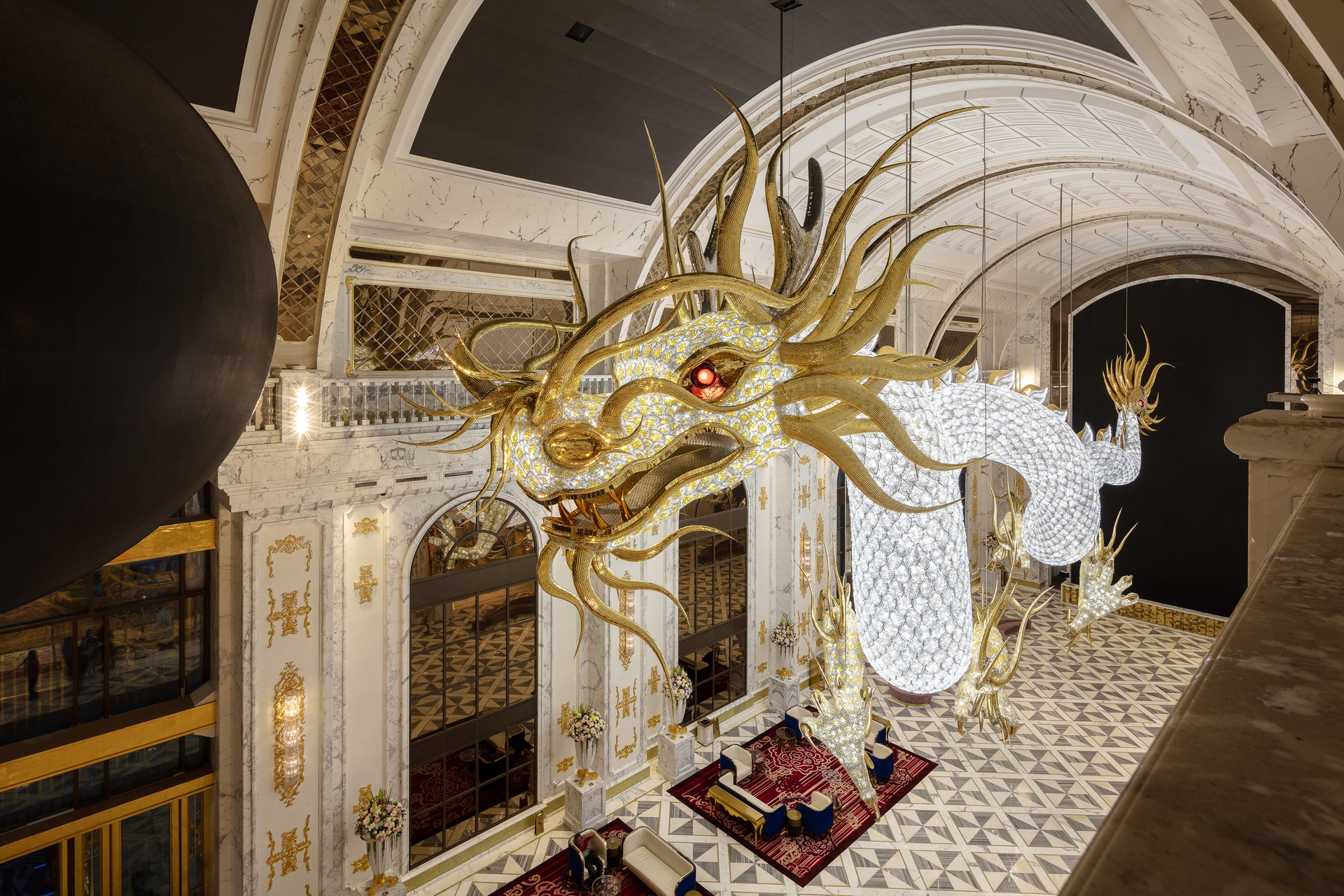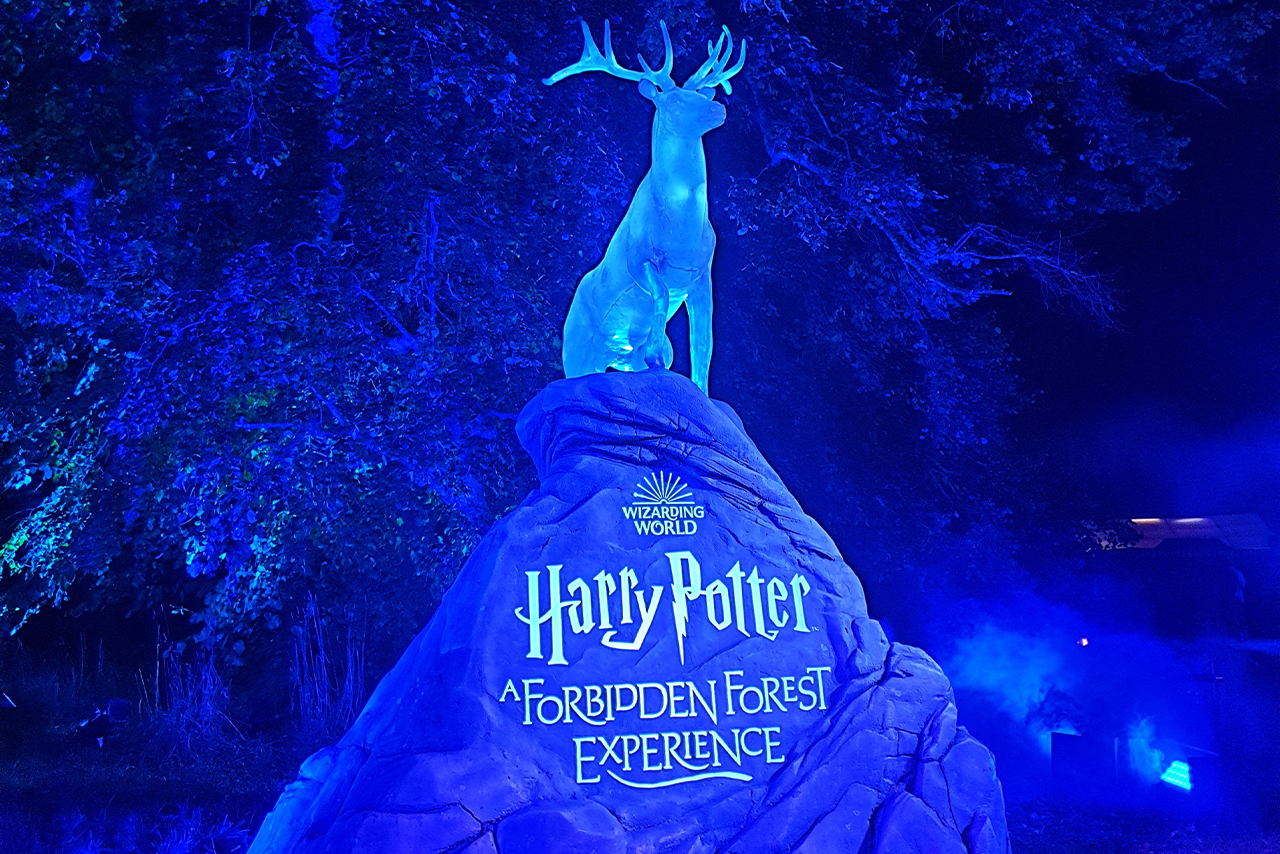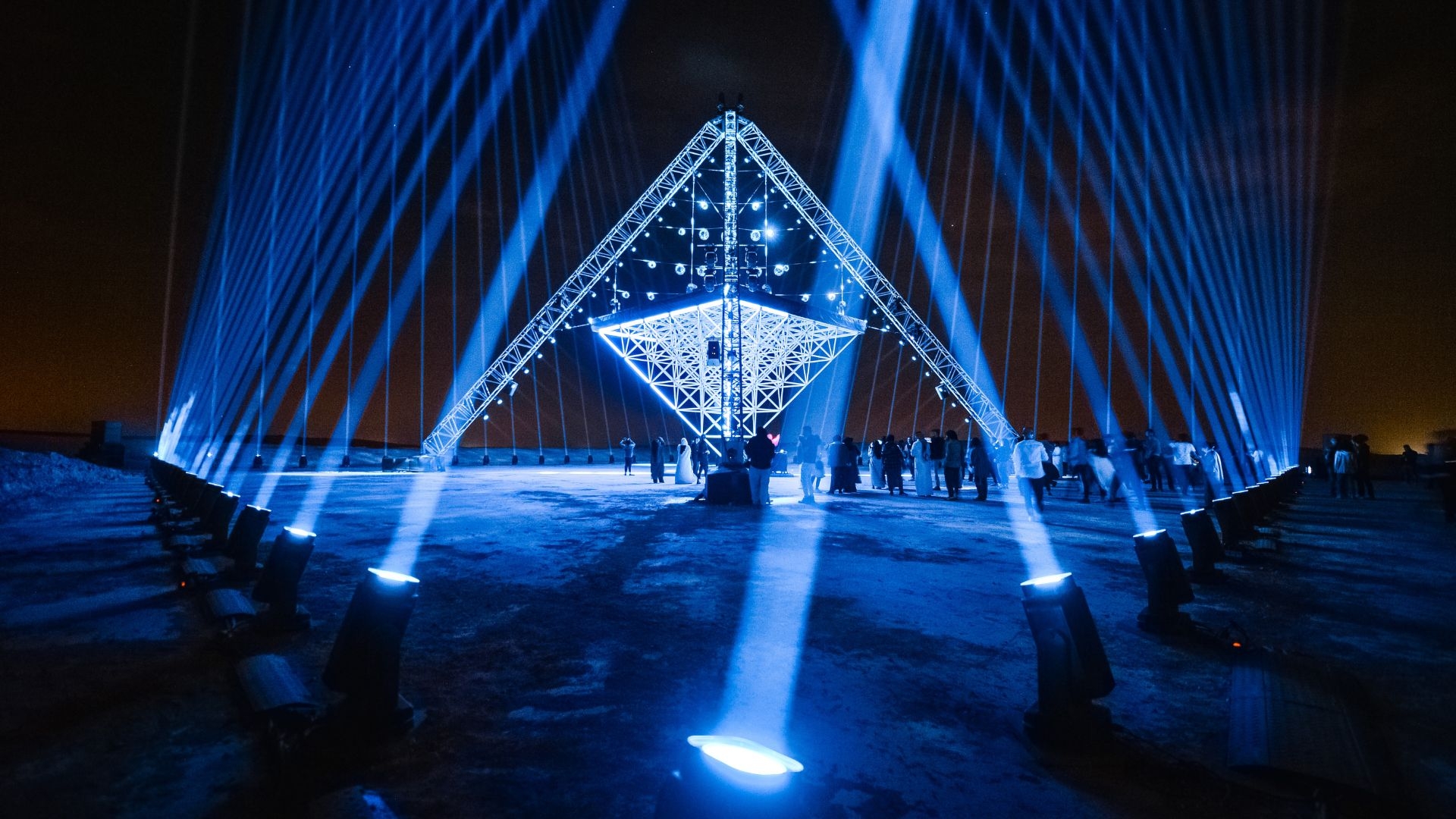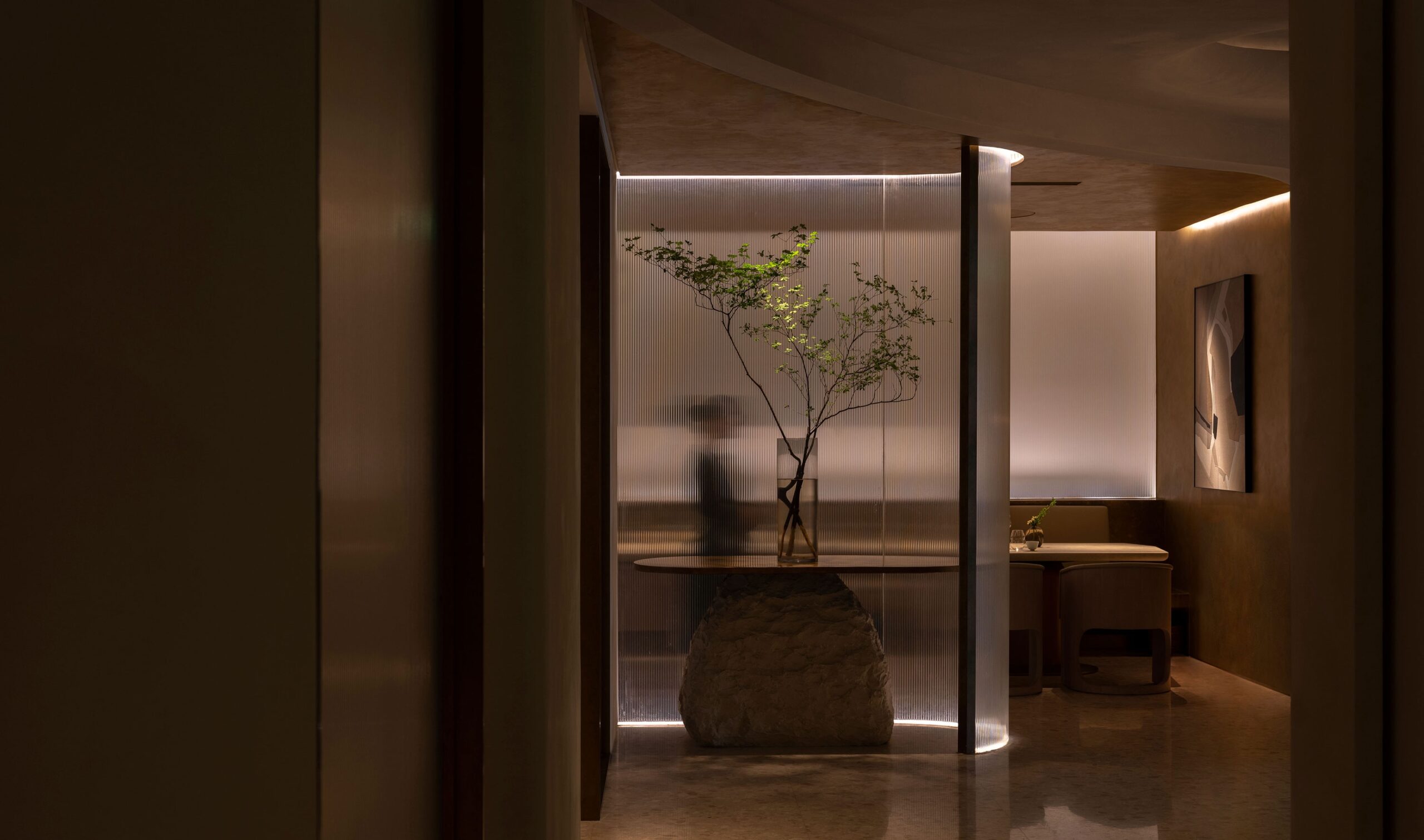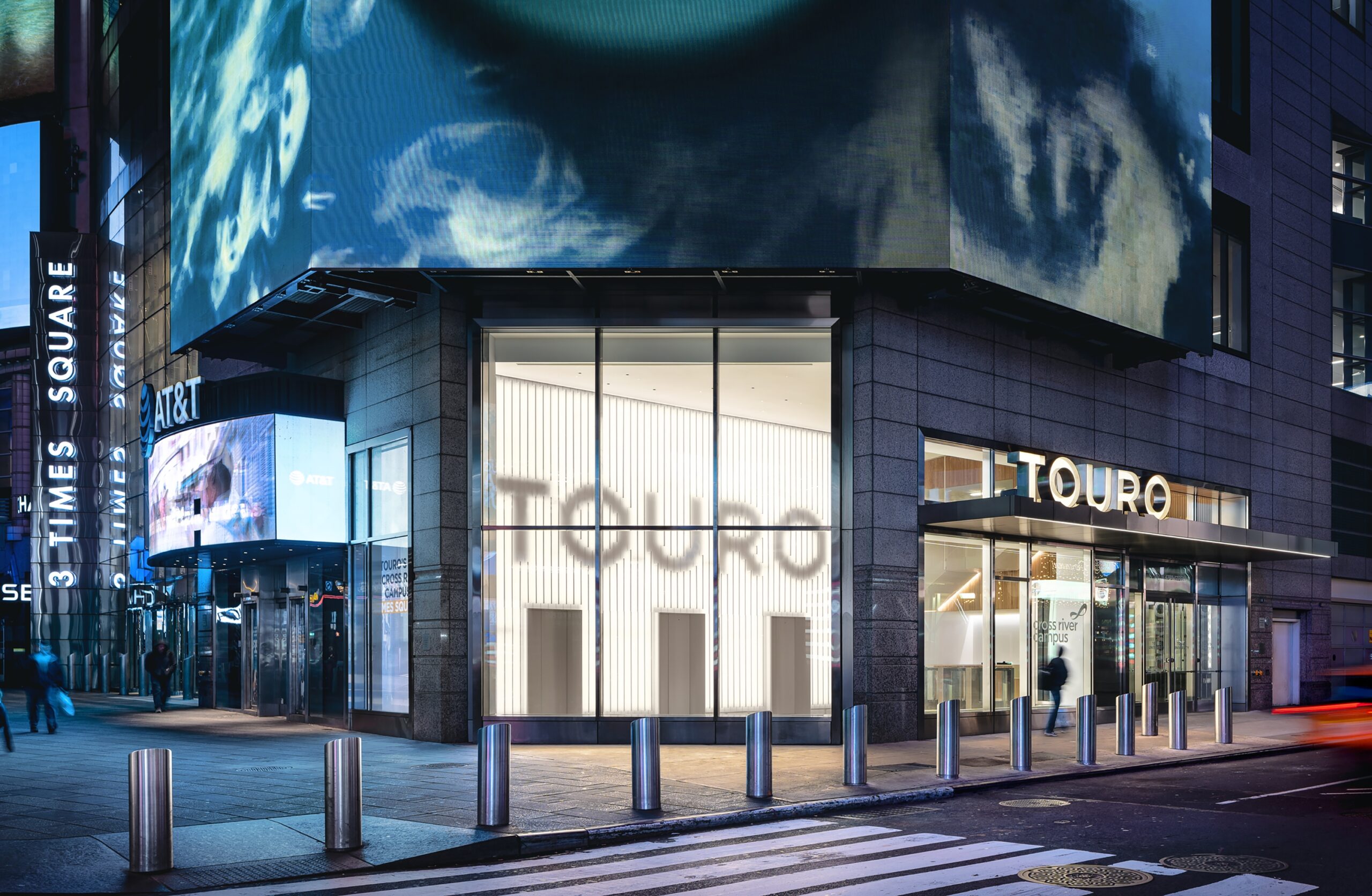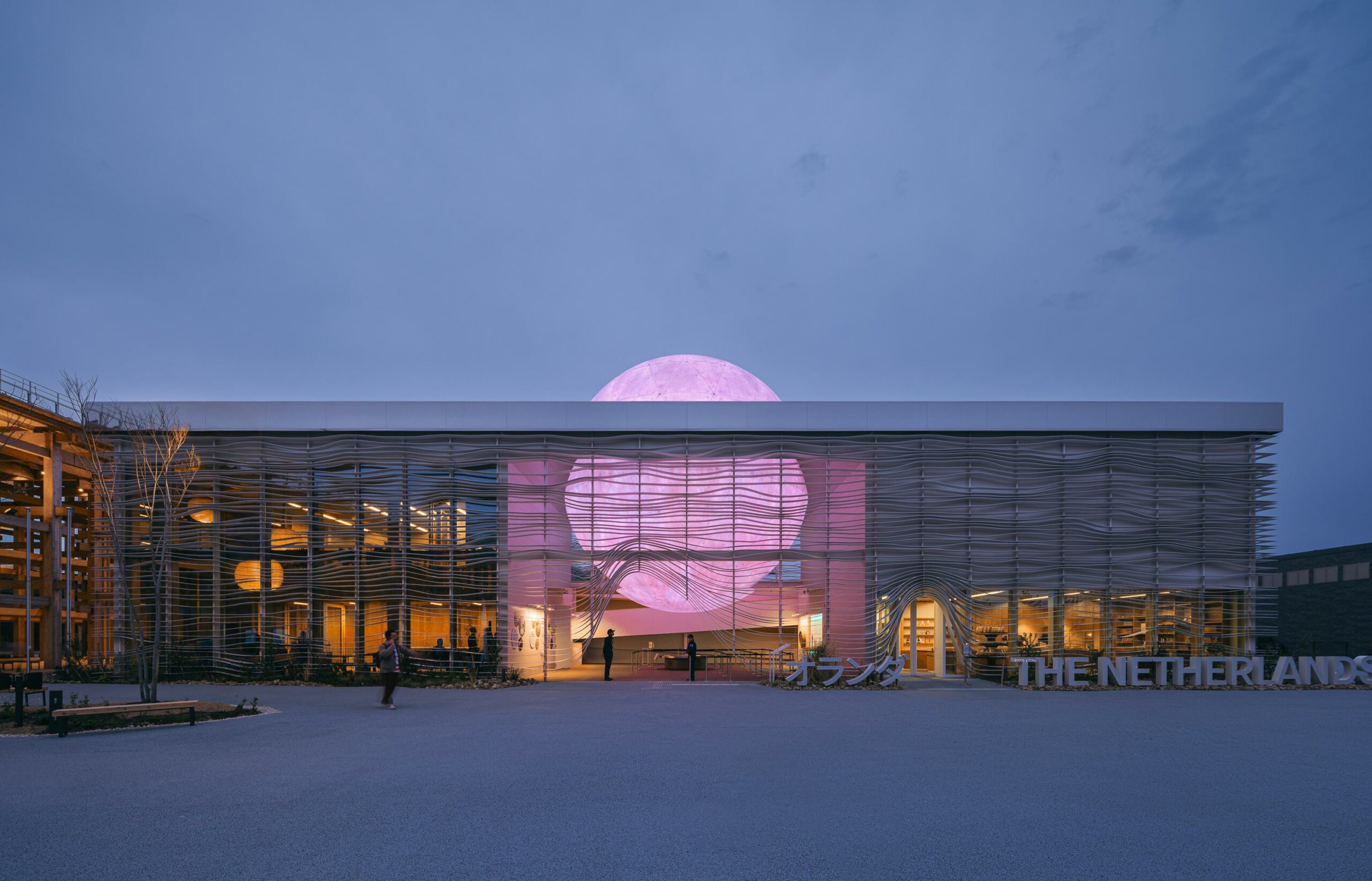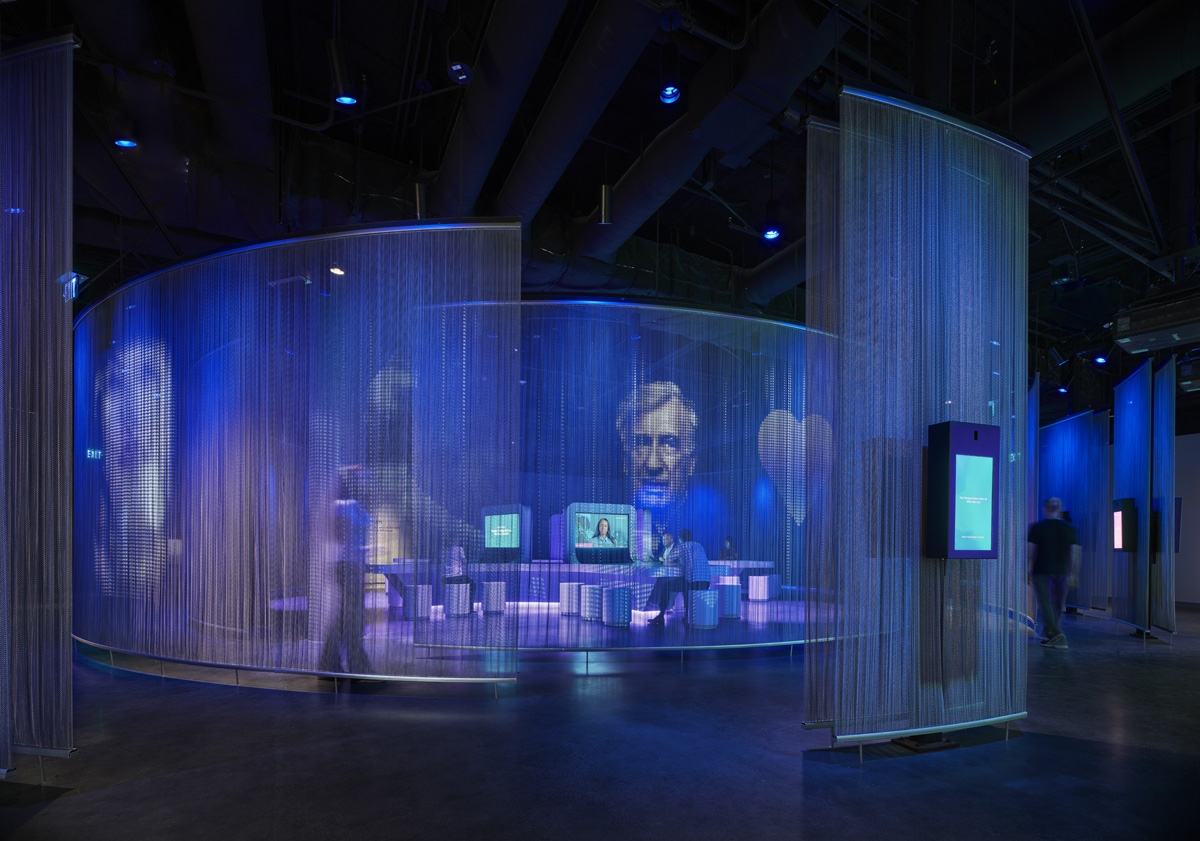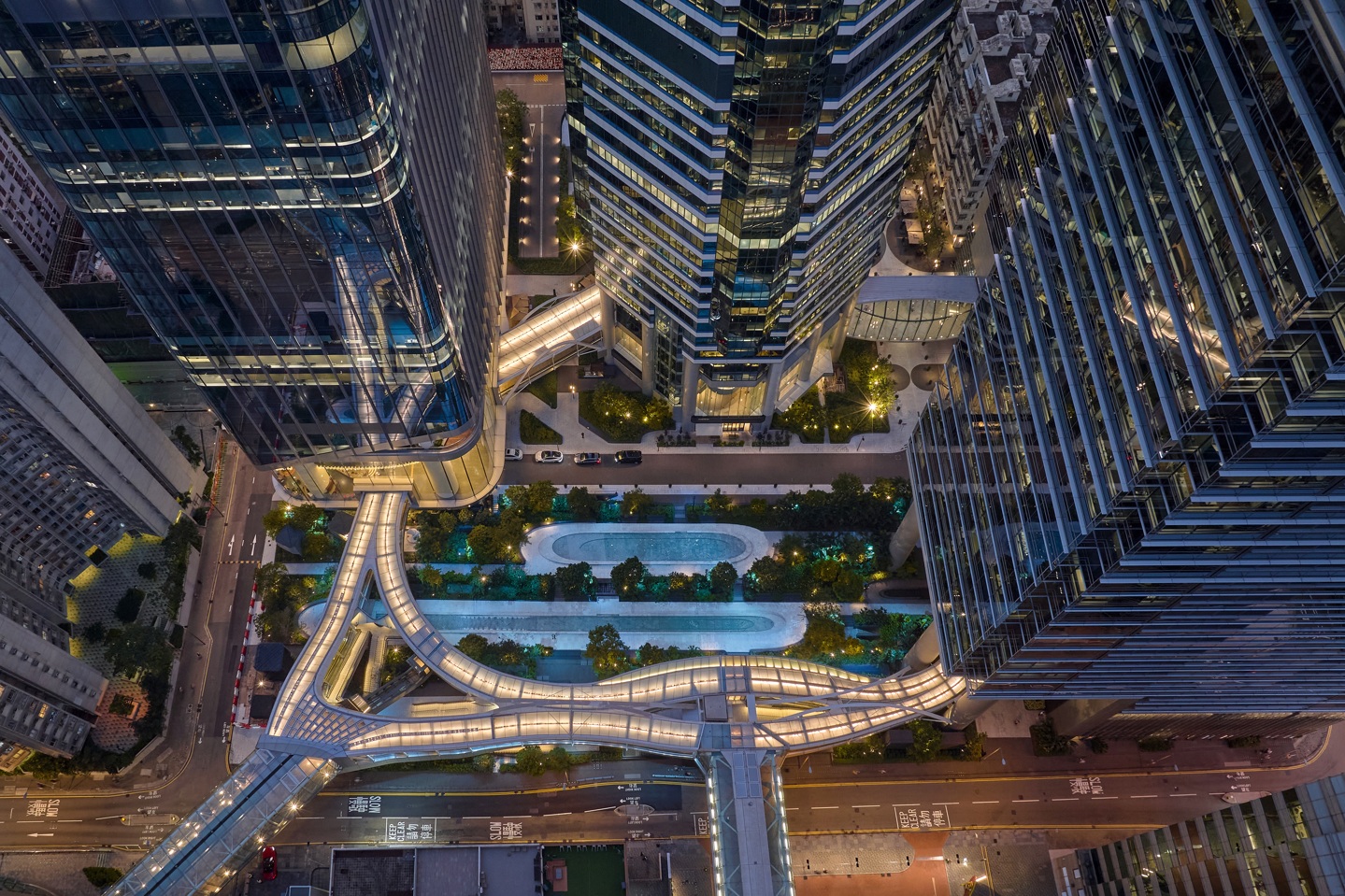When faced with this project, the first thing that catches the eye is not the building itself, but the quality of light that flows through the space, as if the architecture were not made of concrete and glass, but of light and shadow. This shopping center is more than a building, it is a phenomenon; the result of the collision between floating forms, curved lines that defy gravity, and light that gives it a poetic dimension against a harsh and angular urban background. Although the project is defined in a commercial context, its design language tries to go beyond the stereotypes of shopping centers and approach a sensory and cinematic experience.
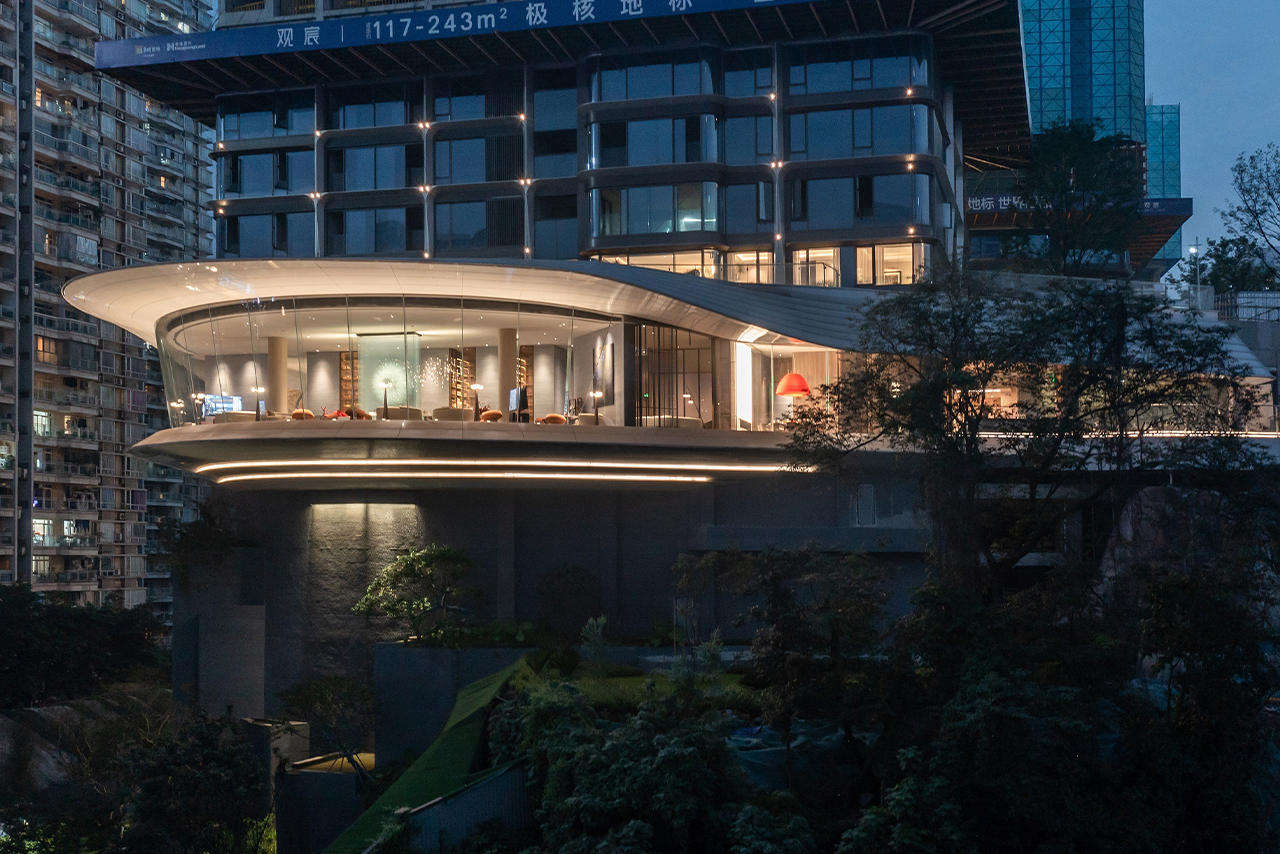
The lighting of this project is focused on three levels: architectural lighting, landscape lighting, and street-scale lighting. These three layers are cleverly combined to create a multidimensional experience. At the architectural level, light is considered not as an add-on, but as part of the essence of the building. Removing visible light sources and directing them into the fabric of the building has taken the lighting effect away from the industrial and closer to a natural quality. Light not only illuminates the building’s form, but also defines it; during the day, metallic surfaces reflect natural light, and at night, artificial light acts as a luminous extension of the form itself. In the landscape, the light avoids competing with nature, highlighting only points of foliage. This choice offers a more subtle and minimal approach, unlike many similar projects that use light to depict trees. But at the street scale, the lighting has become more functional, as a sense of security and visual guidance has replaced the poetic expression of space. But the main question is, should such a project, so daring in its form and expression, not go beyond the conventional in its street-scale lighting to the same extent? Here the architect seems to have made a compromise: the street space must remain familiar and understandable, even if the building itself moves within the boundaries of the imagination.
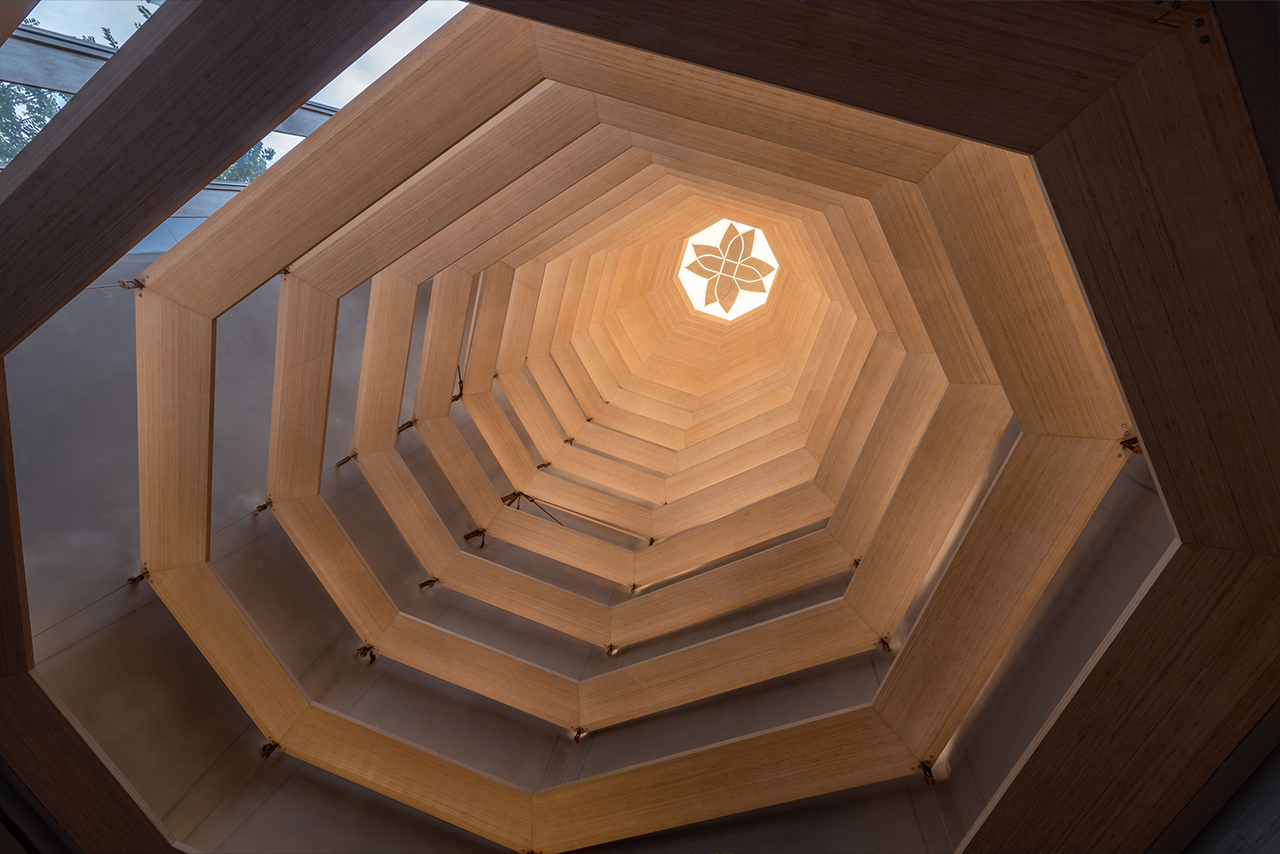
The light, which is penetrated here and there, is not only for illumination, but also to shape an experience that forces the viewer to explore. But is this lighting, in all its dimensions, successful? In parts, the light properly supports the form, guides the shadows and adds depth, but in others it has an overly conscious presence, as if it intends to show itself off rather than complete the architecture.
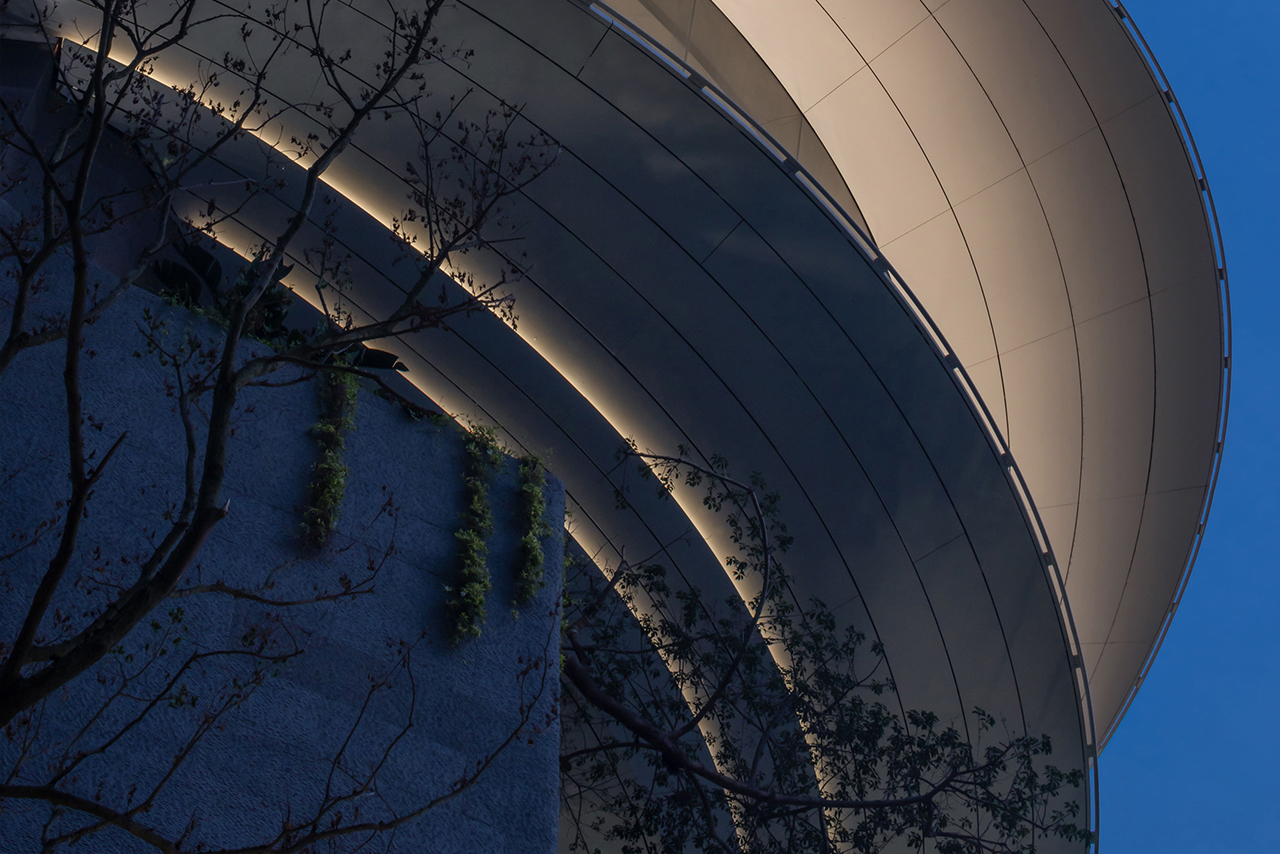
However, what ultimately remains of this experience is not just the curved lines and the layers of light and shadow, but the feeling that the building imprints on the mind. A sense of being suspended between stillness and movement, between heaviness and lightness, between staying and letting go. Here, light is not just part of the design, but also part of the narrative. A narrative that, depending on the angle of view, can appear bold, calm, or even unstable.
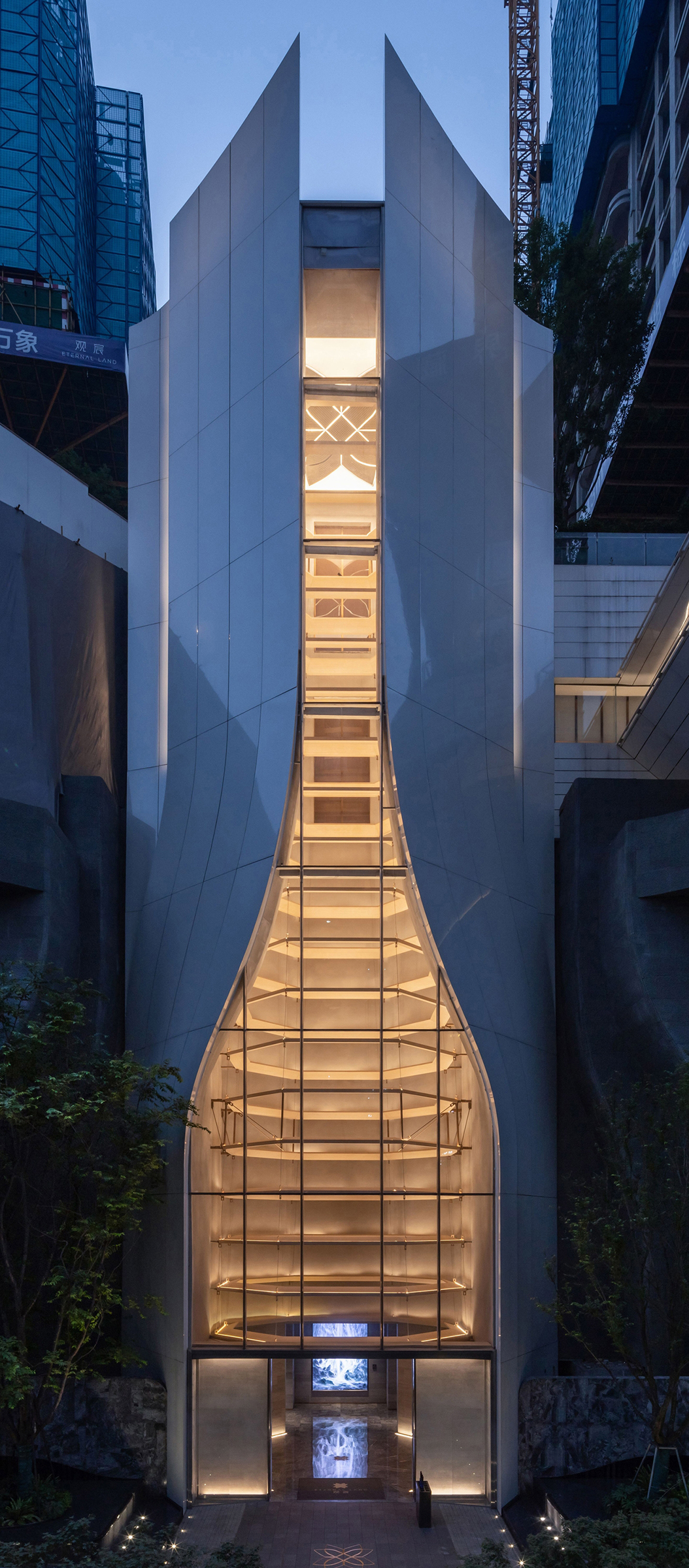
Brand : Brandston Partnership Inc
Designers : Sony Wang, Chen Meng, Xiong Xiaoxi, Shu Quan, Yu Yuanyuan
Photo Credits : Zhou Li
Prize: LIT Lighting Design Award
